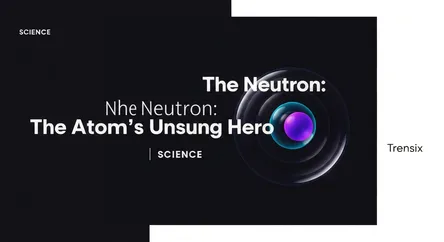Science
The Neutron: The Atom's Unsung Hero

An essential guide to the neutron, the neutral particle at the heart of the atom that is crucial for everything from nuclear energy to medical science.
What is it?
A neutron is a subatomic particle found in the nucleus of every atom except for ordinary hydrogen. It has no electric charge, hence its name, and a mass slightly greater than that of a proton. Along with protons, neutrons form the atomic nucleus, where most of an atom's mass is concentrated. The number of neutrons in an atom's nucleus determines its isotope. For instance, the common Carbon-12 has six neutrons, while the radioactive Carbon-14 has eight. While stable inside a nucleus, a free neutron is unstable and will decay in minutes.
Why is it trending?
Neutrons are perpetually relevant in cutting-edge science and technology. They are the key drivers of chain reactions in nuclear fission, making them fundamental to the ongoing global discussion about nuclear power. In materials science, researchers use "neutron scattering" to probe the atomic structure of new materials, leading to advances in everything from battery technology to pharmaceuticals. Furthermore, astrophysical observations of neutron stars—the incredibly dense remnants of massive stars—continue to challenge and refine our understanding of physics under extreme conditions.
How does it affect people?
The neutron's impact is profound and widespread. It is the cornerstone of nuclear power plants, which generate a significant portion of the world's electricity. In the medical field, controlled neutron beams are used in advanced cancer treatments like Boron Neutron Capture Therapy (BNCT). The production of specific isotopes, which is dependent on neutron count, is critical for medical imaging, archaeological dating, and various industrial applications. From the power we use to the medical treatments we receive, this tiny particle plays a massive role in modern life.